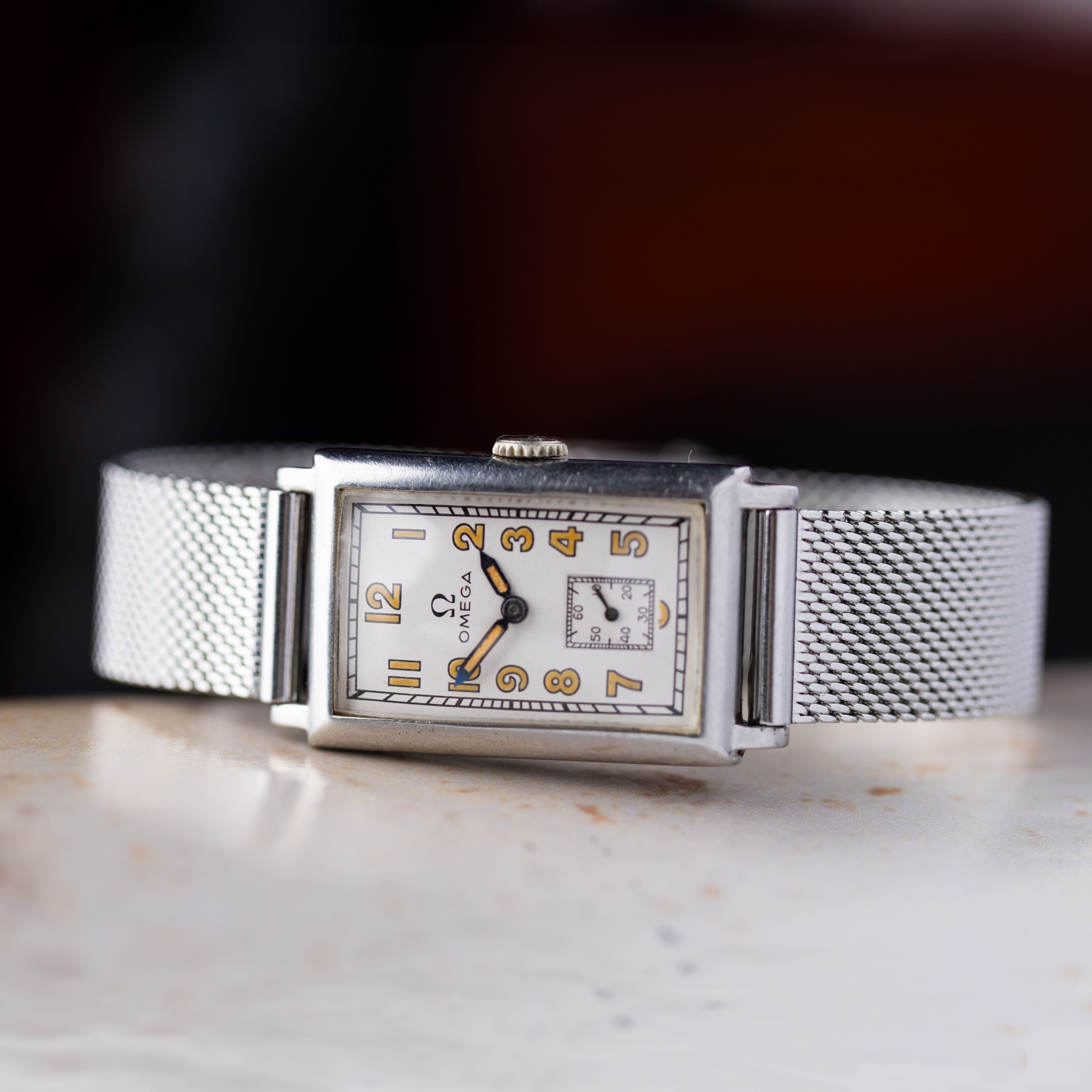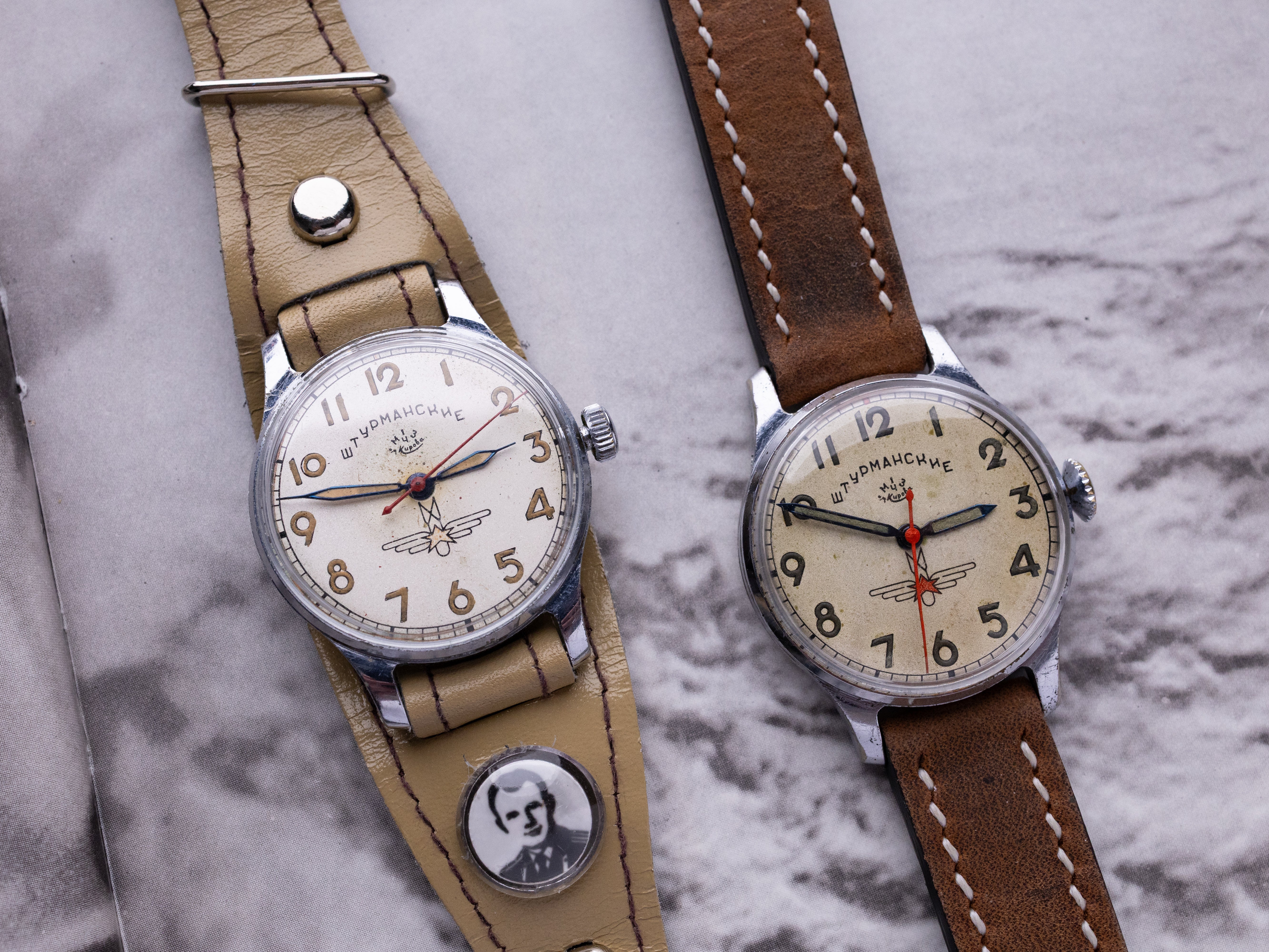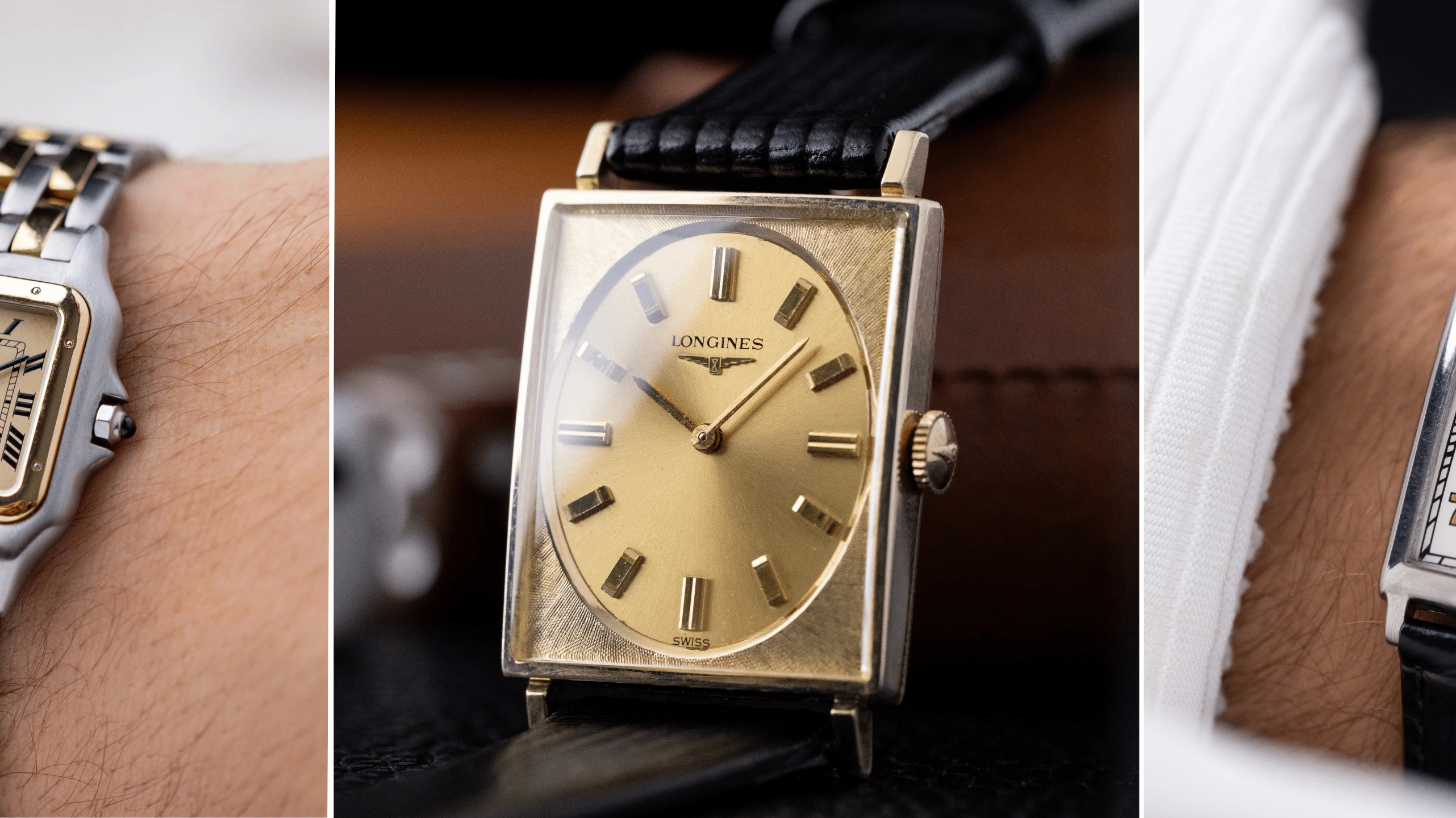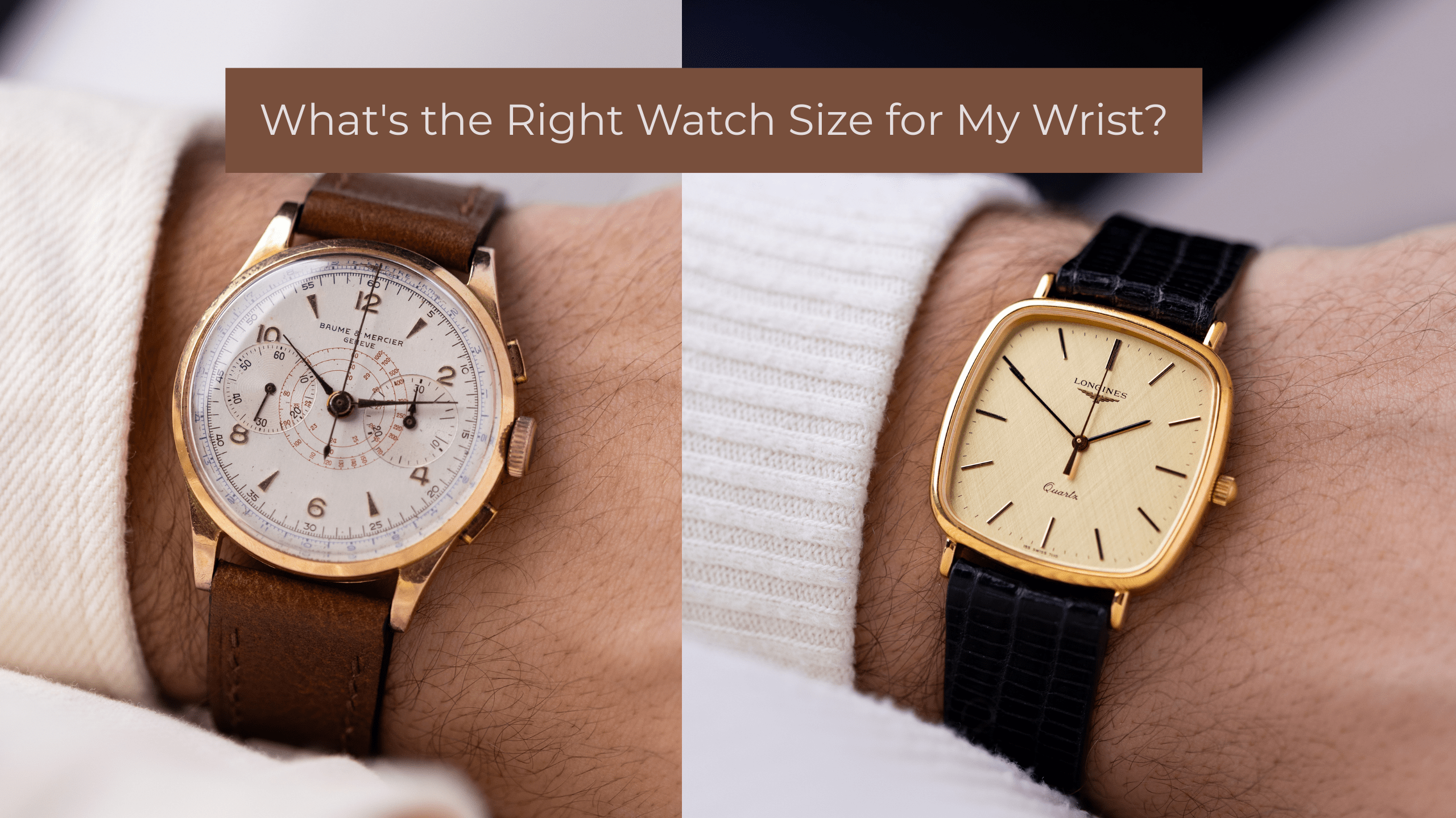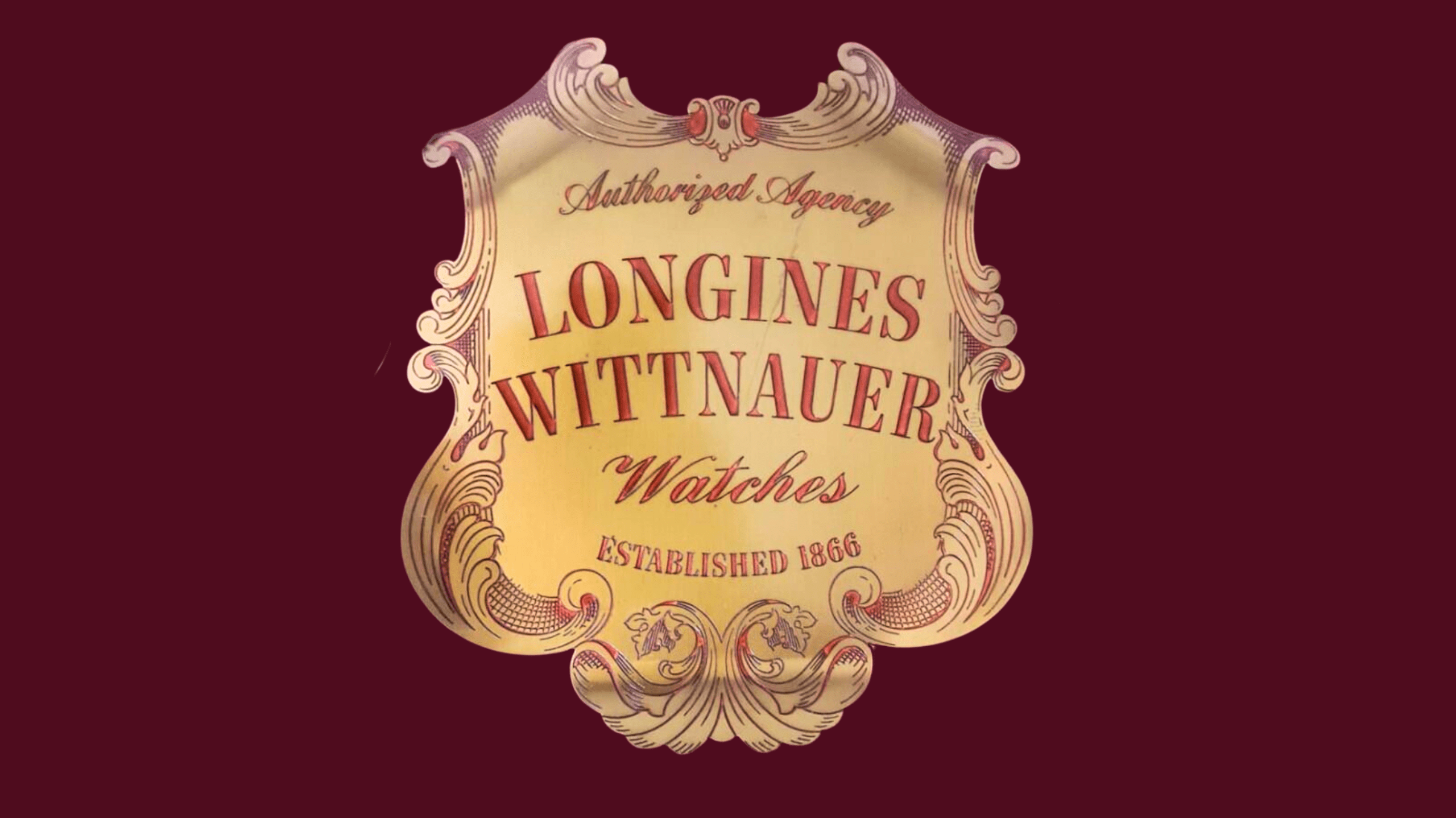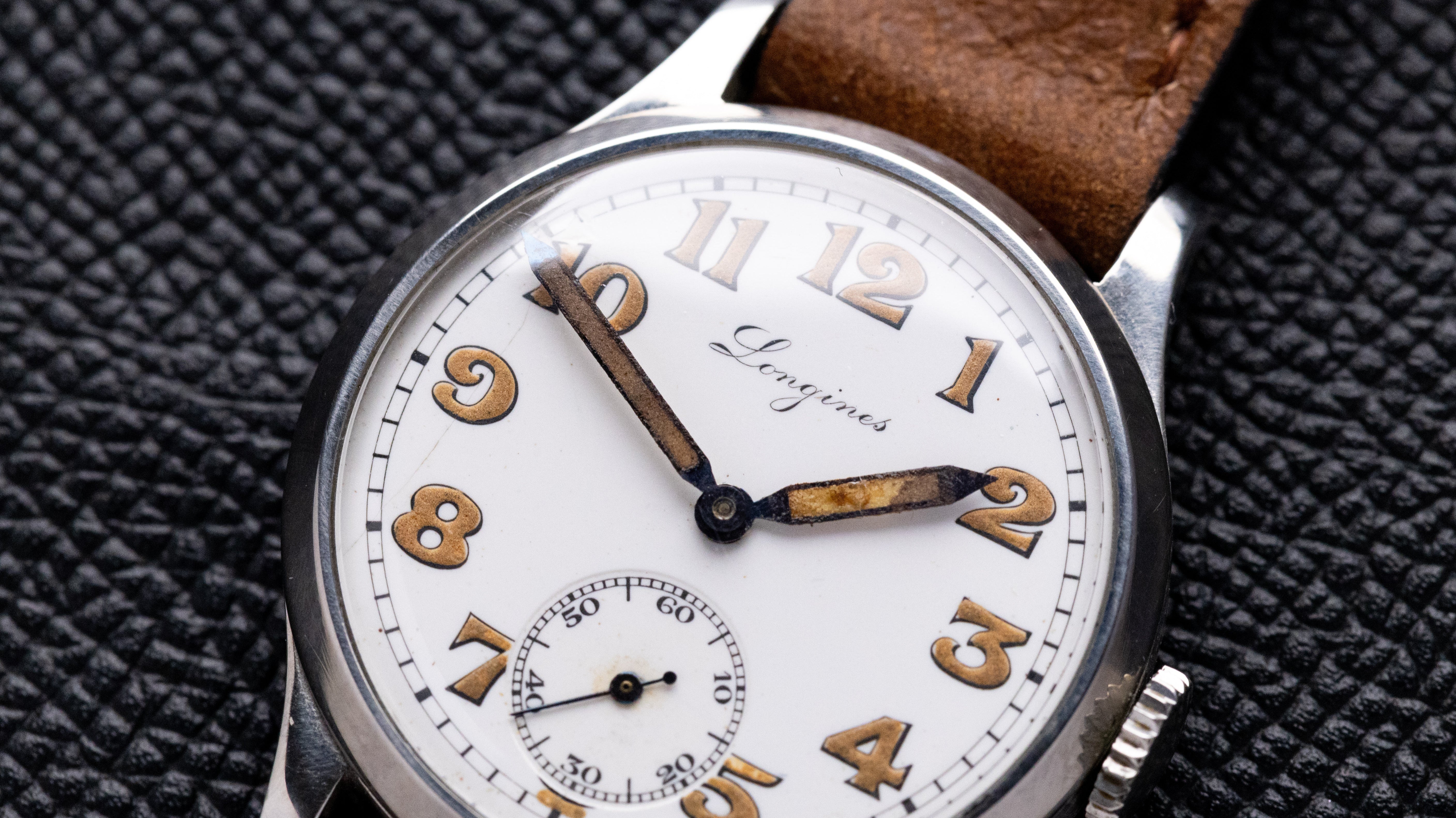When we think of watches worn in space, the Omega Speedmaster is often the first to come to mind. It was NASA-approved, Moon-tested, and backed by countless missions. But long before Omega claimed its place in orbital history, there was another timepiece quietly making its way into the cosmos—a Soviet watch known as the Sturmanskie.

Born in 1949 and issued exclusively to Soviet Air Force graduates, the Sturmanskie was never available for public sale. It wasn’t a commercial product, but rather a tool—a military instrument for timing, navigation, and precision in the cockpit. The watch evolved through several key versions, but among collectors and historians, two early models stand out: Type 1and Type 2. While these classifications weren’t official at the time, they help us distinguish between the two main iterations of the early Sturmanskie.
Type 1 – The Original Aviator’s Tool
The Type 1 Sturmanskie debuted in the third quarter of 1949 and was built around a modified version of the K-26 movement, itself a Soviet evolution of the French R26 caliber from LIP. Unlike standard Pobeda watches that shared the base movement, the Sturmanskie’s 2608 variant introduced a hacking feature, allowing the seconds hand to stop when setting the time—critical for military coordination and interval timing.
It featured a 33mm chrome-plated brass case, blued steel hands, a prominent red seconds hand, and radium-lumed numerals for visibility in low-light conditions. The case back snapped on and lacked sealing, leaving the watch vulnerable to dust and moisture. With 15 jewels and no shock protection, the Type 1 was functional but limited in durability. These watches always included a date stamp engraved on the case back—a detail that later helps identify authentic examples.
By 1954, the 15-jewel model was phased out, making room for an upgraded version that would take Soviet watchmaking to new heights—literally.

Type 2 – The Space Pioneer
The Type 2 Sturmanskie, introduced in 1954, retained the 33mm case but came with major enhancements. The new 17-jewel 43M movement, identical to that used in the Sportivnie line, offered shock resistance, improved accuracy, and a slightly extended power reserve of about 34 hours. Most notably, the case was now sealed with a screw-down case back, increasing protection against environmental hazards.
Design-wise, the watch evolved subtly but meaningfully. The crown became larger and rounder for easier handling, and the hands were redesigned with a more refined, lazenform shape. While many believe authentic Type 2 watches should lack a production year, both dated and undated variants are correct. Watches made between 1954 and 1957 typically include the year, while those from 1957 to 1959 do not.
And of course, it was this Type 2 that made history.
In 1957, a young Yuri Gagarin received a Sturmanskie upon graduating from the Soviet Air Force flight school. On April 12, 1961, that very watch became the first timepiece in space, accompanying Gagarin on his Vostok 1 mission. The Sturmanskie not only survived the journey—it functioned flawlessly in zero gravity.

Conclusion: A Tale of Two Timepieces
In summary:
-
Type 1 (1949–1954): 15 jewels, hacking function, no shock protection, snap-on back, always dated.
-
Type 2 (1954–early 1960s): 17 jewels, shock protection, screw-down case back, redesigned crown and hands, mixed case-back dating.

Both watches represent an extraordinary intersection of military engineering, horological evolution, and Cold War history. But while Type 1 marked the beginning of the journey, Type 2 was the watch that went to space—a testament to Soviet ingenuity and a quiet challenger to the more famous Western space watches.

